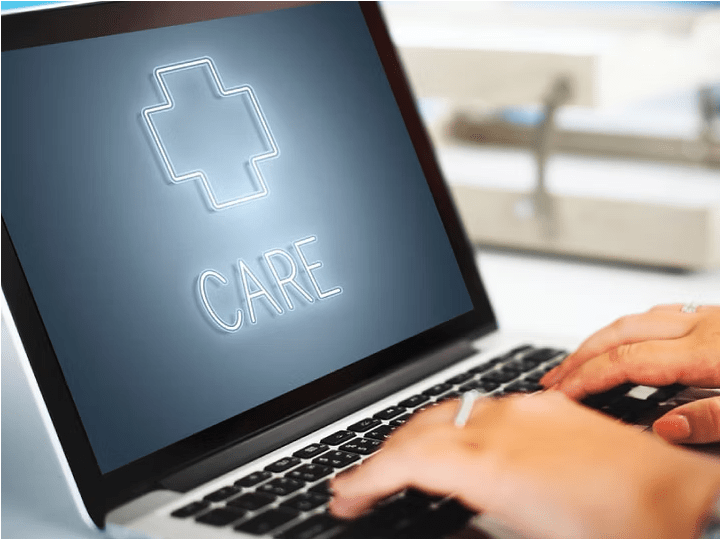What is HIPAA Compliance?
History of HIPAA Regulations
- Modernize the way healthcare information is managed.
- Ensure the protection of personally identifiable information (PII) in the healthcare and health insurance sectors.
- Tackle important issues such as healthcare insurance coverage continuation during job changes and the coverage of individuals with pre-existing conditions.
What is Protected Health Information Compliance (PHI Compliance)

Key Elements of PHI Compliance
PHI Compliance is made up of three key elements.
Patient Privacy
Data Security
Federal Compliance
PHI Compliance Identifiers
- Biometric Identifiers including finger and voice prints
- Certification / License Numbers
- Date of Birth (DOB)
- Device Identifiers and serial numbers
- Phone number
- Fax numbers
- Fingerprints or facial images
- Health plan beneficiary numbers
- Internet Protocol Address (IP Address)
- Medical Records Numbers
- Account Numbers
- Name and Address
- Vehicle Identifiers and Serial Numbers
- Web Universal Resource Locators (URLs)
- Full-face photographic images and any comparable images
- Geographic location and subdivisions
- Any other unique identifying number, characteristic, or code
HIPAA Mandated Security Standards
HIPAA Privacy Rule
- If you or your patient is a victim of domestic violence or assault.
- If you or your patient is in the process of judicial and/or administrative proceedings.
- Cadaveric organ, eye, or tissue donation.
- Workers Compensation.

HIPAA Security Rule
- Protect sensitive health information.
- Ensure your information is only used and disclosed as intended.
- Make sure your team is certified and committed to compliance.
HIPAA Breach Notification Rule
Do I Need to Be HIPAA Compliant?
HIPAA Breach Notification Rule
Do I Need to Be HIPAA Compliant?
Covered Entities
- Medical Practitioners: All providers administering or delivering professional care such as doctors, physicists, pharmacists, nurses, etc.
- Health Plans: All organizations that offer health insurance services including health maintenance organizations (HMOs), preferred provider organizations (PPOs), Medicaid/Medicare programs, employer-sponsored health plans, and more.
- Healthcare clearinghouses: Organizations that process non-standard protected health information into a standard format for electronic transmission.

Business Associates
- Billing Companies
- EHR vendors
- IT service providers
- Consultants and Auditors

How do I Become HIPAA Compliant
Follow The 7 Key Elements of HIPAA Compliance
- Implement policies, procedures, and standards that fit your organization’s needs and objectives.
- Ensure there is a compliance officer and a compliance committee within your organization.
- Make sure your team has the appropriate training and education.
- Create appropriate lines of communication.
- Conduct audits and assessments regularly.
- Create effective disciplinary guidelines to promote and enforce compliance.
- Create a plan of action to effectively respond to and mitigate problems.
Ensure Your Physical and Technical Safeguards and Policies Follow HIPAA Compliance Guidelines
Physical Safeguards
- Access Control: By establishing procedures to limit access to areas containing PHI, you can ensure the security of your data. Consider implementing security systems like access control cards, surveillance cameras, or biometric authentication to take things up a notch.
- Workstation and Use Security: When it comes to managing sensitive data, ensuring the security of workstations is of the utmost importance. Unauthorized access is a no-go. That’s why it’s crucial for employees to adhere to our guidelines on workstation usage. We recommend you go the extra mile to protect your data by strategically positioning your monitors to keep them out of plain sight and the use of privacy screens.
- Device & Media Controls: Managing electronic media containing PHI is crucial. To ensure data security, organizations must have policies for securely disposing or reusing devices. It is vital that data is wiped clean before disposal or reuse.
Technical Safeguards
- Data Encryption: Data Encryption: Safeguard your information from unauthorized access on networks and devices. Utilize SSL/TLS certificates for secure transmission and storage.
- User authentication: To ensure the traceability of your system and protect your sensitive data, you need all users to have their own identification credentials. This includes a unique username and password combination, as well as additional authentication options such as tokens or biometrics.
- Audit Controls: To protect sensitive information, it is crucial for organizations to establish effective mechanisms that record and verify activity on systems that store or utilize protected health information (PHI). These audits play a vital role in not only identifying potential security incidents but also monitoring user access and ensuring adherence to established policies. By implementing robust audit controls, you can proactively identify and address any vulnerabilities, ensuring the utmost security for your organization and the individuals it serves.
Policies & Procedures
- Risk Analysis: Identifying any vulnerabilities, whether they are physical or technical is crucial for your organization’s well-being. Conducting risk assessments on a regular basis will allow you to mitigate and prevent any threats while staying compliant with HIPAA regulations.
- Training Programs: Everyone who oversees PHI must receive regular training on HIPAA regulations and best practices for data privacy. Train your employees regularly to ensure that they are up to date with the latest compliance requirements and regulations.
- Breach Notification Policy: If unsecured PHI is breached, organizations are legally obligated to promptly inform affected individuals. A well-defined policy ensures a swift response and limits unauthorized disclosure of sensitive information.
HIPAA Compliance Requirements
- Administrative Safeguards: creating clear policies and procedures for protecting patient data, designating a privacy and security officer, training staff on HIPAA regulations, and managing risks.
- Physical Safeguards: ensures that access to places where patient information is stored is carefully controlled. This includes limiting entry to authorized personnel, using security cameras and other measures, and properly disposing of devices or media containing patient information.
- Technical Safeguards: protecting electronic patient information by using access controls like unique user IDs and passwords, encrypting data both at rest and in transit, keeping security software up to date, and monitoring network activity for any unauthorized access or breaches.
- Breach Notification: Organizations must follow specific procedures to notify affected individuals and the appropriate health department in case of data breach.
- Business Associate Agreements: creating business associate agreements allows you to ensure that those who work with covered entities also follow HIPAA regulations. These agreements outline the obligations and responsibilities of business associates.
- Complying with the Privacy Rule: organizations must have policies and procedures in place to obtain individual consent, implement safeguards, and provide individuals with access to their own information.
- Complying with the Security Rule: serves as a general requirement for covered entities and associates to implement administrative, physical, and technical safeguards to protect electronic patient information from unauthorized access, use, or disclosure.
By following these safeguards and regulations, organizations can protect patient data and maintain HIPAA compliance.
HIPAA Compliance Violations
Types of HIPAA Compliance Violations
- Unauthorized access or disclosure: Accessing or disclosing protected health information (PHI) without proper authorization.
- Breach notification failure: Failing to notify affected individuals and authorities within the required timeframe after discovering a PHI breach.
- Lack of safeguards: Not implementing appropriate physical, technical, and administrative safeguards to protect PHI.
- Poor training: Inadequate employee training on handling PHI consistent with HIPAA requirements could lead to violations due to negligence or mistakes.
Types of HIPAA Penalties
| Tier | Meaning | Description | Fine |
|---|---|---|---|
| Tier 1 | Unkowing | Covered entities are unaware of any violations | From $100 to $50,000 per violation. |
| Tier 2 | Reasonable Cause | Covered entities should have detected the violation but they did not act with willful neglect. | From $1000 to $50,000 per violation. |
| Tier 3 | Wilfull Neglect | The covered entity acted with willful neglect but corrected any problems within 30 days. | From $10,000 to $50,000. |
| Tier 4 | Willfull Neglect (Not Corrected) | The covered entity acted with willful neglect and failed to fix all issues within 30 days. | Up to $1.5 million for each provision violated annually. |
Recent HIPAA Compliance Updates
Over the past few years, the U.S. Department of Health and Human Services has been taking action to address new cybersecurity threats and advancements in technology by updating HIPAA regulations. To stay compliant with these changes, it is important for covered entities and business associates to stay informed and up to date.
Information Blocking Rule: Improving Data Sharing in Healthcare
OCR's Right of Access Initiative: Ensuring You Get Your Medical Records without Hassle.
Ransomware Attacks: New Guidance from OCR.
Telehealth Flexibilities: Convenient and Secure Healthcare during COVID-19 and beyond.
Looking for a HIPAA Service Provider?
Here at BTI, we have more than 35+ years of experience with all kinds of business associates and covered entities. It does not matter how complex or big your operations are, if you want to ensure that your organization is up to date with HIPAA compliance regulations, you are in the right place!
You are one click away from complying with HIPAA regulations, contact us today and start your journey towards compliance without complications and for the best price!
FAQs
- The Privacy Rule.
- The Security Rule.
- The Breach Notification Rule.
Here are some of the most common HIPAA violations to be aware of:
- Not providing proper training to employees on HIPAA compliance.
- Experiencing security breaches that expose electronic protected health information (ePHI).
- Sharing protected health information (PHI) with colleagues without proper authorization.
- Losing a laptop or mobile device that contains unencrypted ePHI.
- Incorrectly disposing of ePHI, allowing unauthorized users to access it.






